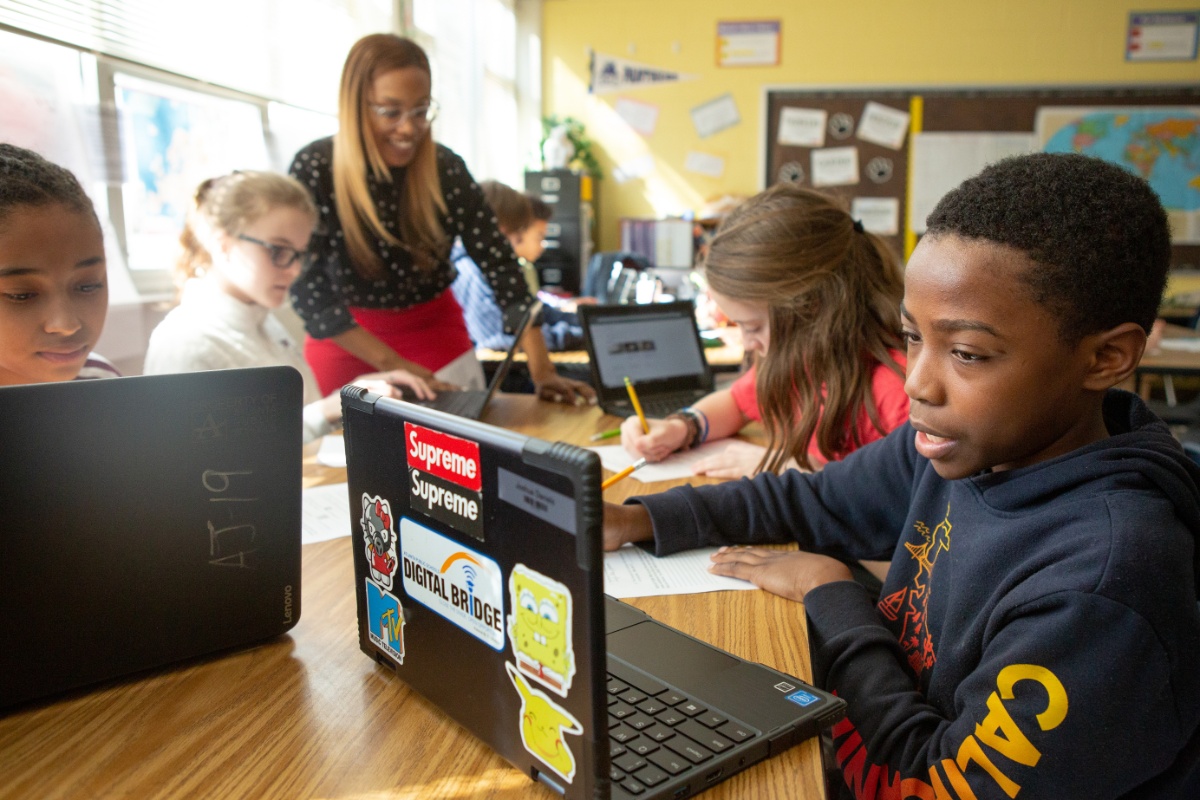Pre-reading strategies are a great way to help our students engage more fully with reading. Helping set up their expectations before they begin supports them to be more successful readers. A great way to help students know what to read is a book talk- simply taking the time to tell them what the book is about. Those of us in the library talk books all of the time, but sometimes, as mentioned in a previous blog, I like to invite my students to do some thinking, to do some work, before simply introducing them to a new read.
Besides objects and opening lines, another fun way to introduce a book is by using a montage of images. Our world today is driven by images. We have phones, TVs, billboards, newspapers, texts, and posts on social media filled with images. Starbucks even markets itself solely on the power of an image. Every so often you come across a book that encompasses so many pieces, for me it is often a book about American History, that it simply cannot be contained in one image. For me, that book was Undefeated by Steve Sheinkin. Officially, Undefeated is the story of Jim Thorpe and the Carlisle Indiana football team. Unofficially, the story includes Teddy Roosevelt, bronc busting, farming, the Olympics, Dwight Eisenhower, baseball, Pop Warner, Duke, Yale, and Sitting Bull.
As a way to introduce this particular book, to activate schema and tie-in to prior knowledge, to appeal to that curiosity, to capture our visual learners, I do not just put one image up on the screen, I place a whole montage of images…
As a way to introduce this particular book, to activate schema and tie-in to prior knowledge, to appeal to that curiosity, to capture our visual learners, I do not just put one image up on the screen, I place a whole montage of images, then I invite students to join a Padlet and brainstorm all of the ways that these images could be related- this helps tie into their prior knowledge, which I believe is key to how we learn.
I then, in fact, took these images and created a Book Trailer for Undefeated to share with students after I have sparked their curiosity. This particular montage was created via a grid feature in Microsoft Sway, an alternate presentation tool to PowerPoint.
Steve Sheinkin and Neal Bascomb are two authors who lend themselves to this particular strategy for sparking student curiosity and introducing books beautifully. Whether it is this title, Lincoln’s Grave Robbers, Port Chicago 50, Bomb or Fallout, Sheinkin always fills his stories with the context surrounding that particular event in history. Whether it is Nazi Hunters, Sabotage, or The Grand Escape, Bascomb is the expert at introducing all of the people who will play a part in pulling off the goal of that book at the beginning- at times his books are a bit overwhelming to begin- but he weaves them into the story so effortlessly that you forget your initial confusion. For both of these authors, one image to introduce the book simply does not do it justice, and in a world of images and visual learners, why not build on this way of helping our students succeed?

This particular strategy does not have to be limited to books and book talks. Suppose you are beginning a unit on a particular point in history or concept in social studies- be it a war or a civilization or socialism or freedom. Perhaps you could hook into your students’ curiosity and get them excited about exploring the upcoming unit by placing a montage of images that seem disconnected, but as you explore your unit together, will connect? Create a Padlet for students to enter their thoughts on how these images could connect. Think of the class discussions that could arise from looking at what your different students come up with. Or perhaps you are going to begin exploring a concept in science- electricity or the structure of DNA or genetic diseases. You could do the same thing- begin with a collection of images, have students begin thinking about how it ties into what they already know by sharing their thoughts on Padlet, then use that to begin directing where you will go in class. Or what about Art or Music? Are you ready to introduce The Jazz Age or Impressionism? You could do some of the same things. The key to this strategy is the power of images to catch our attention, to tie into curiosity, and thus help our students become engaged in what they are reading and learning. Enjoy exploring how you can take this concept and apply it to your area of expertise.
Resources
Please login or register to claim PGPs.
Alternatively, you may use the PGP Request Form if you prefer to not register an account.



